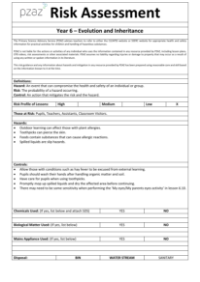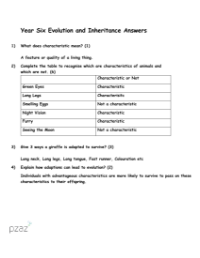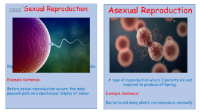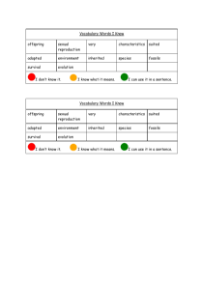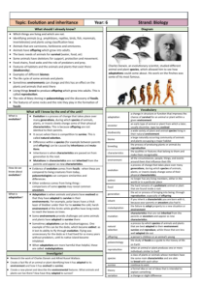Evolution and Inheritance - Assessment
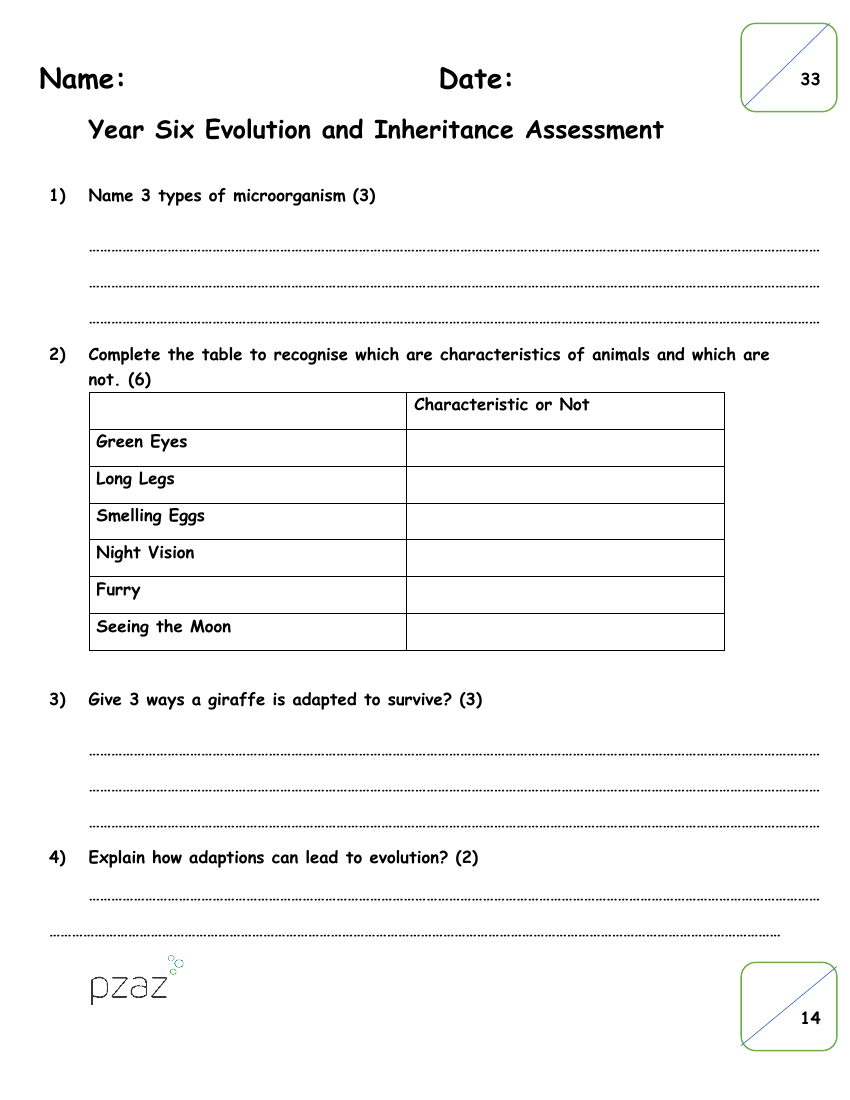
Science Resource Description
The Year Six Evolution and Inheritance Assessment is designed to evaluate students' understanding of fundamental concepts in biology. The assessment begins by asking students to name three types of microorganisms, encouraging them to recall and list examples of these tiny life forms. Subsequently, students must complete a table to distinguish which listed characteristics are typically found in animals and which are not, such as green eyes, long legs, and night vision, among others.
Further questions delve into the specifics of animal adaptation, requesting students to describe three ways a giraffe is adapted to survive in its environment. Additionally, they are prompted to explain how adaptations can lead to evolution, linking individual changes to broader species development over time. The assessment includes a section where students must identify whether certain descriptions, like green eyes or a sense of humour, are inherited characteristics or not. It also asks about the transmission of genetic information, including who passes on characteristics and what percentage is inherited, and why offspring are rarely identical. Students must define evolution, describe how animals produce offspring, and identify the chemical responsible for passing on characteristics. The final part of the assessment presents statements about evolution for students to judge as true or false, testing their comprehension of concepts such as genetics, the likelihood of inherited traits, and the meaning of 'survival of the fittest'.


